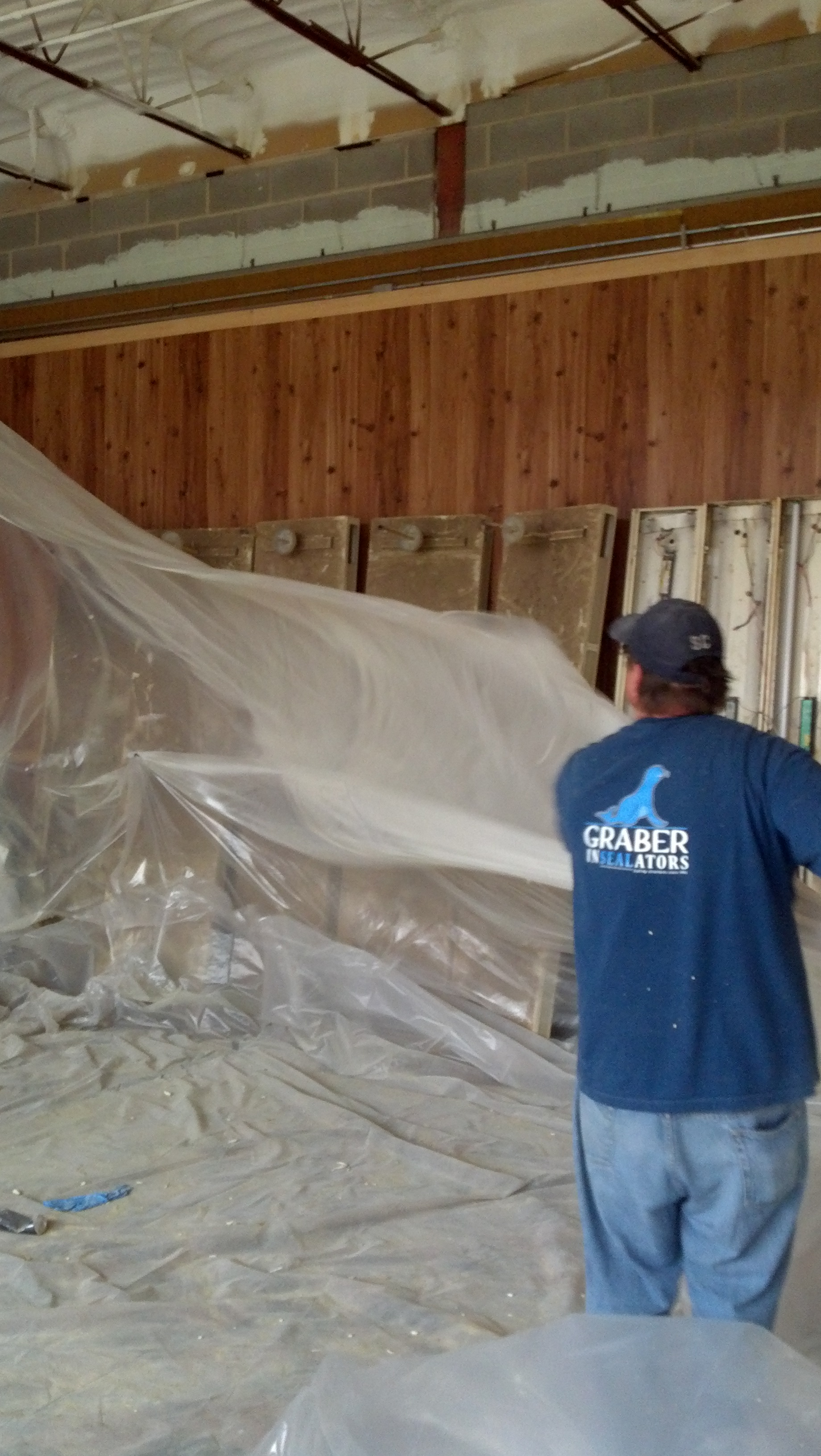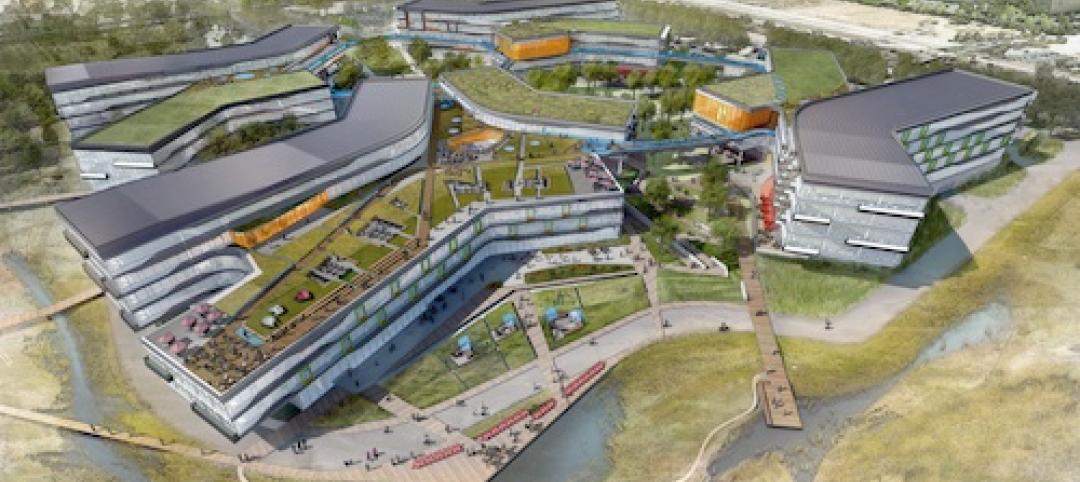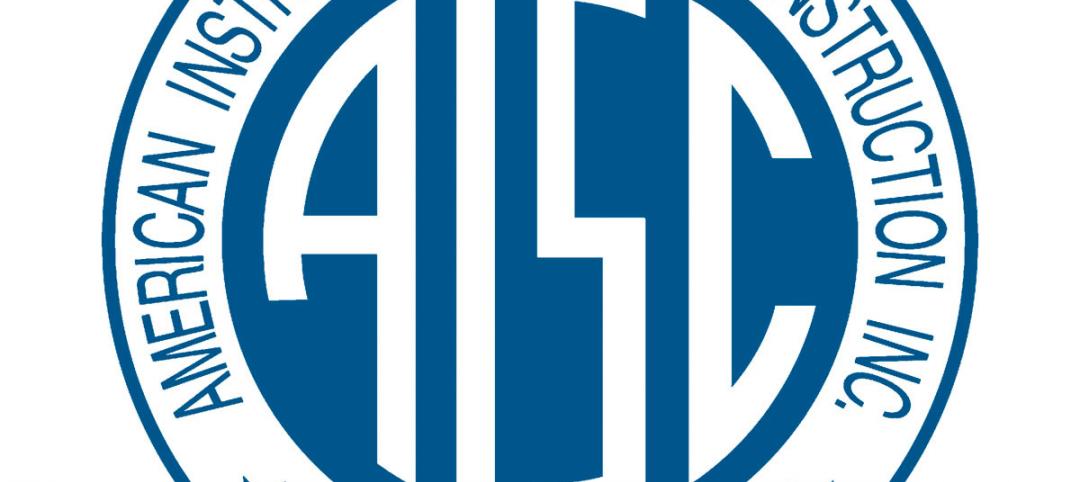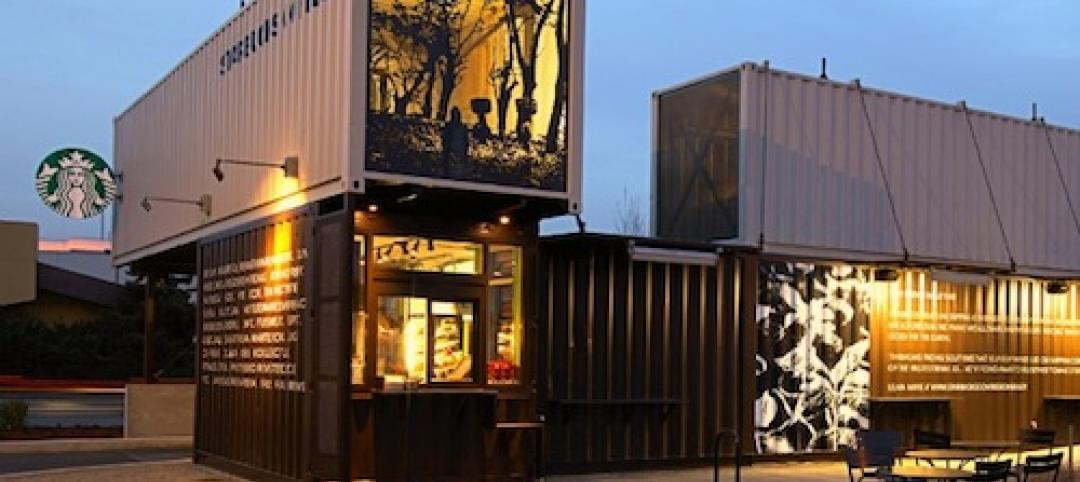Located near Louisville, Ky., Fort Knox is home to the U.S. Army’s Armor Center, Armor School, Recruiting Command, and numerous other facilities. The post has a daytime population of more than 30,000 people and more than 3,000 family housing units. In total, Fort Knox encompasses 11 million square feet of conditioned space across more than 109,000 acres.
A military post of this size consumes a significant amount of energy. Fort Knox is acutely aware of the need for sustainability to ensure continuous operations and meet Federal energy goals and requirements. The post’s Disney Barracks complex demonstrates sustainability in action by using ground coupled heat pumps to move thermal energy from the earth or buildings to provide space heating and cooling.
Facility overview
The Fort Knox Disney Barracks complex is named for Major General Paul Disney, a World War II veteran and first commander of the Armor Training Center at Fort Knox. The complex consists of 38 facilities, including 14 barracks, six dining facilities, six classrooms, battalion headquarters, a chapel, movie theater, and several other facilities. These buildings make up approximately 811,400 total square feet of conditioned space.
At the time of construction in the 1960s, energy efficiency was not a priority. The entire Disney complex was heated from a centralized, high-pressure, high-temperature hot water system. The design, age, and operation of the central heating plant rendered it inefficient and outdated compared to today’s standards. Cooling was equally inefficient. The Disney buildings were cooled from a mixture of decentralized cooling equipment of different ages, efficiencies, and functional conditions.
None of the buildings used automated temperature control systems. In addition, the underground hot water distribution system had many thermal leaks due to age. Only four of the barrack facilities had ventilation equipment, none of which functioned. As a result, windows were always left open for ventilation, which caused discomfort, poor indoor air quality, and mold issues from uncontrolled temperature and humidity.
Equipment failures added to the Disney Barracks complex central heating pitfalls, the most recent of which was a failure associated with the underground piping. Fort Knox received $2 million to repair and replace a portion of the underground hot water distribution system, but opted to use that funding to fix the bigger problem instead of fixing one failing component after another in an outdated, inefficient system.
Fort Knox’s energy consumption analysis of all Disney Barracks complex facilities revealed that the inefficient heating and cooling systems consumed 39% more energy than required. The post decided to replace these systems and converted the Disney Barracks complex in less than six months with geothermal heating and cooling. Use of a utility energy service contract (UESC) dramatically shortened the construction cycle of the energy project and allowed for an operational facility in a fraction of the time the traditional procurement methods required.
Project at a Glance
Federal facility: U.S. Army Fort Knox Disney Barracks
Conditioned square feet: 811,435 square feet across 38 facilities
System overview: Geothermal heat pumps with automated ventilation and control systems
Warranty: 50 years for ground piping system; 25 years for inside components
Annual energy savings: 106,600 MMBtu
Utility partner: Nolin Rural Electric Cooperative Corp.
Year of completion: 2005
Total cost: $10.4 million
Annual energy cost savings: $906,100
Payback: 11 years
System overview
Fort Knox replaced approximately 70% of the existing Disney Barracks heating, ventilation, and air conditioning (HVAC) systems with geothermal heat pumps (GHPs), taking advantage of renewable energy resources. The vertical closed loop GHPs consist of 180 boreholes drilled 500 feet deep, each of which is interconnected. The post also added automated ventilation controls with dedicated fresh air systems and a wireless control system. These systems improve barrack air quality.
Geothermal Technology Overview
Geothermal heat pumps (GHP) move heat from one place to another to provide space heating and cooling throughout the year. In the summer, a GHP transfers heat from inside the facility to the ground outside or below. In the winter, a GHP extracts heat from the ground and transfers it inside the conditioned space.
A GHP system has three major components: the ground loop (buried piping system), the heat pump itself, and the heating and cooling distribution system. Two main types of GHPs exist. Closed-loop systems use sealed horizontal or vertical pipes as heat exchangers through which the heat conductive fluid transfers heat to or from the ground. Open-loop systems pump water to the heat exchanger and then back to the source.
More than 60% of total Fort Knox facility square footage, or more than six million square feet, is served by automated geothermal heating and cooling. Additional ground coupled heat pumps are installed in privatized housing. A central, automated control system pulls all facilities into one, easy-to-use system that serves as the backbone of a post-wide energy management program. More than 140 post facilities are tied into the system with plans to add more in the near future.
Results summary
The renewable energy ground coupled heat pumps at Disney Barracks reduced Fort Knox’s annual energy consumption by approximately 106,600 million British thermal units (MMBtu) in 2006. This is a 10% reduction in natural gas consumption. Electricity use overall changed little from this project.
The Disney Barracks’ GHP system helped Fort Knox and the U.S. Army save more than 102,000 thousand cubic feet (Mcf) of natural gas for a cost savings of $906,100 in 2005. The benefits, however, extend further. The indoor air quality of the Disney Barracks facilities greatly improved, directly benefiting occupant health and working conditions.
Project summary
Fort Knox strives each year to exceed reduction goals set by Federal regulations and requirements. Fort Knox reached this goal and maintained its reputation as a model Army post by effectively utilizing renewable energy and a variety of energy efficiency and management tools. Fort Knox improved quality of life for everyone on the post while reducing energy consumption and expenses. +
--
Resources: Federal Energy Management Program; Department of Energy (DOE) Geothermal Energy Technologies Program.
For more information contact:
Anne Sprunt Crawley Federal Energy Management Program 202-586-1505 anne.crawley@ee.doe.gov
Andy Walker National Renewable Energy Laboratory 303-384-7531 andy.walker@nrel.gov
Related Stories
| Feb 28, 2013
BIA opens entries for 2013 Brick in Architecture Awards
The Brick Industry Association (BIA) has opened entry submissions for its 2013 Brick In Architecture Awards—with a new Renovation/Restoration category and new category divisions this year. BIA’s annual awards honor architectural excellence and sustainable design nationwide that incorporates clay brick products as the predominant exterior building or paving material.
| Feb 27, 2013
Marvin Windows and Doors now accepting entries for fifth annual Marvin Architect’s Challenge
Architects have an opportunity for their best work to compete on a global stage in the fifth annual Marvin Architect’s Challenge. Previous winners of Marvin Windows and Doors’ prestigious award program have come from Spain, Ireland and across the United States — with their work among the world’s finest.
| Feb 27, 2013
Bronx residents get LEED Platinum public housing complex, rooftop farm
The New York City Housing Authority has opened Arbor House, a 124-unit LEED Platinum complex in the Morrisania neighborhood of the Bronx.
| Feb 25, 2013
HOK sustainability expert Mary Ann Lazarus tapped by AIA for strategy consulting position
Mary Ann Lazarus, FAIA, LEED® AP BD+C, has accepted a two-year consulting position with the American Institute of Architects in Washington, DC. Her new position, which begins March 1, will focus on increasing the AIA's impact on sustainability across the profession. The St. Louis-based architect will continue consulting at HOK.
| Feb 25, 2013
First look: Google's new HQ is engineered for creative collisions
The new California "Googleplex" will be engineered to make sure no Google employee will be more than a 2.5 minute walk away from any other.
| Feb 25, 2013
AISC seeks proposals for development of BIM best practices guide
The American Institute of Steel Construction seeks assistance from BIM users in identifying and documenting best practices to facilitate the long-term standardization of BIM in structural steel construction.
| Feb 22, 2013
Westlake Reed Leskosky will renovate training center for Cleveland Browns
Local firm Westlake Reed Leskosky has been chosen to design renovations to the Cleveland Browns' Training and Administrative Complex in Berea, Ohio.
| Feb 22, 2013
Starbucks pilot program rolls out small, modular stores
Coffee giant Starbucks is rolling out mini-stores with maximum local flavor, as part of an international pilot program.
| Feb 22, 2013
Defense department report: Green design saves taxpayers money
An independent report on energy efficiency and sustainability standards used by the Pentagon for military construction affirms the value of LEED-certified high performing buildings to America’s military and U.S. taxpayers.
| Feb 22, 2013
Detroit project would bring 'fairytale forest' to riverfront
A proposal by atelierWHY to create a heavily wooded park on the downtown riverfront has taken first place in the juried Detroit By Design competition.

















